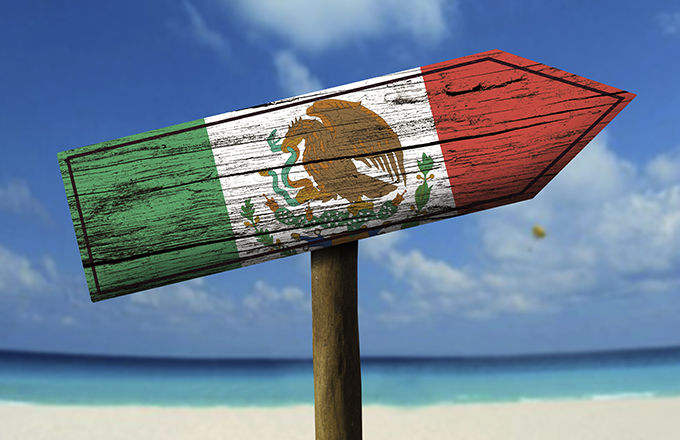
Emerging Market ETFs—both equities and fixed income—were the big winners in the battle for assets in August. Among equity funds, developed markets captured 73% of all net flows[1], while emerging markets captured 27%. That’s fewer absolute dollars being allocated to emerging markets, but that 27% is still nearly triple the category’s 9.7% slice of the iShares MSCI All Country World Index. Looked at another way, it represents a 4.0% increase in net ETF assets allocated to emerging markets for the month, compared with just a 0.9% increase for the larger developed markets category.
The emerging market with the biggest increase in new funds wasn’t one of the widely followed BRIC countries but rather Mexico: money flows added a whopping 10.6% to net ETF assets tracking that country’s stocks. That said, we have a NEUTRAL recommendation on all the Mexico-related ETFs, including the Deutsche X-trackers MSCI Mexico Hedged (DBMX) and iShares MSCI Mexico (EWW) funds. We’re much more constructive on the broader iShares MSCI Emerging Markets fund (EEM), on which we have an OVERWEIGHT recommendation.
At the other end of the scale, Euro-zone countries dominated the list of those where investors pulled assets. Outflows from Germany were 2.6% of net assets, followed by Spain (2.5%), Italy (2.2%) and Belgium (1.8%). The big winner among developed markets was Canada, where net ETF assets tracking the country’s stocks increased 5.8% to over $20 billion.
In the fixed income space, money went looking for yields. Naturally, emerging markets were the big winner here too, with net ETF assets allocated to the space up by 6.1%. But that was followed closely by Preferred Stock funds, which saw an increase of 4.4.%. Meanwhile investors yanked money from low-yielding Treasury ETFs (FIGURE 1).
Figure 1: Fixed Income Fund Flows
Net flows1 as % of AUM, by category, August 2016

Source: ETF Research Center and DTCC
Among sectors, Financials and Technology together accounted for nearly half the total net inflows, while the only sector investors yanked money from was Utilities. Actually, investors didn’t “yank” any funds from Utilities, but rather increased their bets on the short side. Within the Select Sector SPDR family, Utilities (XLU) is now the most shorted sector, with short interest at 35% of shares outstanding up from 27% and the end of July 2016. Consumer Staples (XLP) is the second-most shorted sector at 34% of shares outstanding (FIGURE 2).
Figure 2: Short Interest as a Percentage of Shares Outstanding
Select Sector SPDR ETFs

Source: ETF Research Center and FactSet
Overall we think the message from ETF flows during August was that investors embraced a “risk-on” mentality. The question, of course, is how long that will last.
How long do you think the “risk on” trade will last?
[1] We measure “net flows” instead of total money flows as a better gauge of investor sentiment. Net flows strips out the portion of ETF assets that are held as short interest. Authorized participants often create new ETF shares to meet demand for short sales. We believe it is misleading to characterize this inflow of funds as bullish; likewise it is misleading to view outflows that are simply the unwinding of short positions as bearish.



